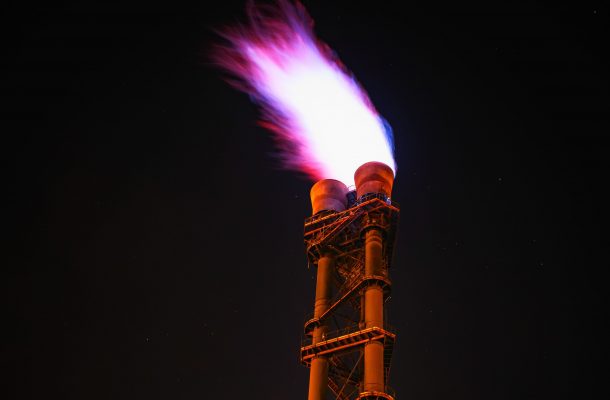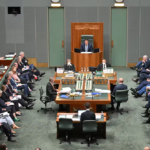The misplaced idea of a gas-led recovery

The Prime Minister and his Energy Minister seem to believe in a gas led recovery and he is supported by polemics from various business and political think tanks. However the evidence strongly suggests a significant decline in gas usage in Australia rather than an increase. Further there is more chance of a decline in exports rather than significant growth.
In 2014, the evidence favoured ultra-super critical coal plants and combined cycle gas plants. Then it was said that the electricity system could not absorb more than 15% renewables, so the aim was to make the fossil fuel grid as efficient as possible. However times have changed and regardless of emissions considerations, the cost and reliability of renewables has changed the economics dramatically.
Grids all over the world from Texas, US Midwest, Germany, California, the UK and Spain have shown an ability to operate safely with peak renewable penetration of 65-90% and annual share between 25% and 60%, all with little or no additional storage.
Less up to date readers might scoff at the idea of reliable renewables, but new wind turbines generate for 40-50% more hours per year than 2012 models and tracking solar generates for 35% more hours than fixed tilt plants. That means that the gaps are shorter and shallower. In turn costs have fallen from Germany to Texas and even on the NEM.
As renewable penetration passes an apparent 25% or so threshold, wholesale power costs have fallen. Germany has averaged €32 per MWh this year vs €48 in 2010. On the NEM, prices are down from $93 per MWh in 2018/19 to $69 19/20 and $49 over the last three months. Combined with increasing geographic diversity and more flexible operation of hydro, it means that wind/hydro/solar never falls to zero or even now below about 9% of NEM demand. In fact, the lowest renewable day in the last 12 months has been 17% renewables.
The Dirty Dozen
There are at least a dozen reasons why gas demand is unlikely to climb:
1. Gas generation on the NEM has fallen from 12% of supply in 2017 to 8.1% year to date. Over the last 12 months, average gas generator utilisation across the NEM has fallen to less than 19% and even that was artificially high due to extended outages of coal plants, delayed connections of renewables, transmission outages and low hydro generation. There is enough renewables in front of and behind the meter due to come on stream before a new 1,000 MW gas plant could be built, to almost double current annual output of wind and solar. In fact, over the next 5-6 years new customer owned solar alone will generate almost as much power as gas does today.
Total new supply that is already committed will supply 40-50 TWh/y, gas only supplies 17 TWh/y to the NEM now. Therefore, both coal and gas will be under further pressure. Coal plants with captive coal mines have a marginal cost of production (excluding capital charges) including normal maintenance of $25-55/MWh. Wind and solar are not zero but very close, so even as gas prices have fallen dramatically below replacement cost in the last few months, gas has not gained material market share.
In other words, gas is last and for the foreseeable future will remain last in the price stack (based on marginal costs of production). Even Germany and the UK with far fewer wind, solar and hydro resources than us are reducing gas generation as well as coal and nuclear. They are no longer substituting gas for coal. Germany’s coal generation has fallen by 60% since 2010, Nuclear by 40% and gas by 20%. Gas generation in the UK peaked in 2016 and has fallen 25% since then while coal has fallen 70% in the same time and nuclear by 30%
2. Grid supplied electricity demand is actually falling not just in Australia but many other countries. NEM supply less rooftop solar has fallen from 207 TWh in 2010 to 191 TWh in the 12 months to date. If Australia is to become economically competitive it will have to fall much faster. The whole UK economy only uses about 20% more electricity than us. Italy with 2.5 times the population and 6 times the industry only uses 30% more electricity. California with a similar economic structure and climate to us but with a GDP twice as large uses almost the same amount of electricity as Australia.
3. Having spent almost 50 years in manufacturing around the world, I am very sceptical of the re-shoring movement. While some manufacturing will return to Australia it will add very little to energy demand. There is already vast worldwide oversupply of most energy intensive manufacturing capability such as metal and fuel refining so investment in significant new capacity here is unlikely.
The companies that may prosper like Grey Innovation, ANCA or even BAE, CSL, Resmed or Cochlear use very little energy per $ of output. Even the industries that do use large quantities of gas only employ 10,000 people in Australia and for many reasons are unlikely to expand much.
4. Miners are in the early stages of using renewables to minimise gas use but expanding rapidly. Even introducing a battery to a gas fired power plant reduces gas consumption by reducing the need for spinning reserves.
5. It is also quite possible that CSG exports will fall as contracts expire, because Queensland gas is very expensive compared to conventional gas while the United States, Russia and Qatar are dramatically increasing their export capacity.
There are also strong grounds to suggest that the expected boom in gas demand will not happen. Demand for gas fired power stations has crashed. Gas usage in Europe’s main markets is falling – there are three threats; a) increasing building efficiency and warmer temperatures is lowering heating demand; b) as mentioned renewables are increasing faster and requiring less backup than any official forecast ever predicted; and c) electrification of heating attacks gas first.
6. Similarly, energy use in coal mining will fall as demand from China, Korea, Taiwan and India will fall quickly over the next 5-7 years as their renewable transitions accelerate and China may again become a net coal exporter. So even if other commodity exports remain high, gas use in processing will almost certainly fall.
7. The gas industry itself claims new gas will cost $6/GJ to get out of the ground plus transmission to the customer and profit for the gas company. Transmission costs vary greatly but a typical figure would be around $1/GJ, so fuel costs at the plant gate are $7+. A new plant like Barker Inlet has non-fuel maintenance and operation costs of $8-20/MWh so the marginal cost of generation at a very optimistic year round efficiency of 44% and .28 MWh/GJ is $55-75/MWh.
To calculate total cost, the plant utilisation needs to be considered. Gas plants in Australia are running at 18% capacity but let’s assume coal closes rapidly and gas plants reach 35% capacity factor. Barker Inlet cost $295m for 210 MW. Fixed costs such as finance and depreciation insurance, etc, will be approximately $30m/year. 210 MW at 35% utilisation will generate about 640,000 MWh so the fixed cost per MWh is $45-50/MWh.
Thus the breakeven for the plant is $95-125/MWh if it can achieve more than double the current capacity factor. People often mention the US experience, but even there, where 40% of coal capacity has closed over the last decade and nuclear + hydro generation has barely changed, gas plant utilisation is still only around 36% and numerous plants have actually closed.
8. In Australia, peak hydro capacity is 23% of peak NEM demand, in the US it is only 16% and the transmission grid is more fragmented so the potential for support of wind and solar by hydro here is therefore higher than in the US. Consequently the low renewable (including hydro) generation gaps will be shorter and shallower. Thus, by definition, gas plant utilisation will be lower than the US. Further, the gas expansion in the US has already resulted in large write-offs and write-downs..
9. This is not to say that 600-900 MW of new gas plants along the east coast won’t be part of the transition, but the utilisation of those plants will probably be very low so gas demand will still fall. For example, at the current state of the art, the 1,480 MW Yallourn plant could be replaced with 1,500 MW of wind 800MW/3,200MWh of storage, 1,500 MW of tracking solar and 400 MW of gas.
However, given normal capacity factors the gas would only operate for less than 1,000 full load hours per year and in some years less than 500 hours. Worse, its economic viability may well be soon undermined by renewables + storage. This can be seen in California and New Mexico where even though gas prices are a little over half those here, gas plants are being replaced with solar and batteries.
10. Even if Snowy 2.0 does not happen (which it should not but that is another story), storage will be built at wind and solar plants to overcome grid constraints and in businesses and homes to reduce peak demand charges/store rooftop solar. Initially it will only average 10-15% of peak capacity for two hours, but within six or seven years that will still add up to about 2-3 GW. That is nowhere near enough to replace gas capacity but will make substantial reductions in gas utilisation.
At the same time, gas usage in SA is expected to halve as renewable and storage installations continue. New synchronous converters, batteries and synthetic inertia provide far more responsive grid stabilisation services than gas turbines ever can (https://www.energy-storage.news/blogs/digital-inertia-energy-storage-can-stabilise-grid-with-1-10-the-capacity-of). By about the end of 2022 it should be possible to run SA for many hours if not days at a time with zero gas.
11. In the past renewables were so expensive that it was important to use every watt of power produced, now they are so cheap that if we overbuild renewables and throw away 30-40% of the power they produce on good days so there is still almost enough power on bad days, it is still cheaper than building and running new gas plants.
It also makes the grid more stable because if a plant is only putting out 70% of its available power and the wind drops a bit or patchy cloud comes over, the wind or solar plant can still deliver the same amount of generation that is was 5 minutes before. Further if a transmission line falls or a generator transformer fails somewhere else, the curtailed wind or solar plant can change its output 10-100 times faster than a gas turbine.
After all, we curtail 35% of our coal plants potential output and 82% of our gas plants potential, why can’t we curtail renewables.
12. Even in domestic and commercial settings, gas is slowly being replaced for water and space heating by heat pumps and for cooking by induction. The Netherlands has banned new gas connections to houses and the movement has started to spread, the first all-electric suburb is being built in Canberra now, because electric heating is now cheaper as well as cleaner.
Some claim that gas is cheaper than electricity, which it may be in raw energy terms, but a gas space heating or storage hot water system is about 70-80% efficient. An electric heatpump (reverse cycle airconditioner) uses electricity to pump heat from the air or ground into a hot water tank or into or from a house. Because it is only moving heat not creating it, the heatpump can produce 3-5 kWh of heating/cooling for every kWh of eletricity used, so gas heating and hot water are now much more expensive than heatpumps.
The Bottom Line
In summary, gas demand is unlikely to rise significantly, so large investments in new gas infrastructure either won’t happen because investors do similar sums to the above or they will happen with large amounts of taxpayer subsidies which we all seem to oppose. But still the end users are unlikely to increase usage. Worse, if they are forced to by policy hindering alternatives, customer energy costs will rise rather than fall.
Peter Farley is the President of the Victorian Vernier Society and former Deputy President of the Victorian Committee of Engineers Australia. He has also served as a Director of the Inner Melbourne VET Cluster for more than a decade.














